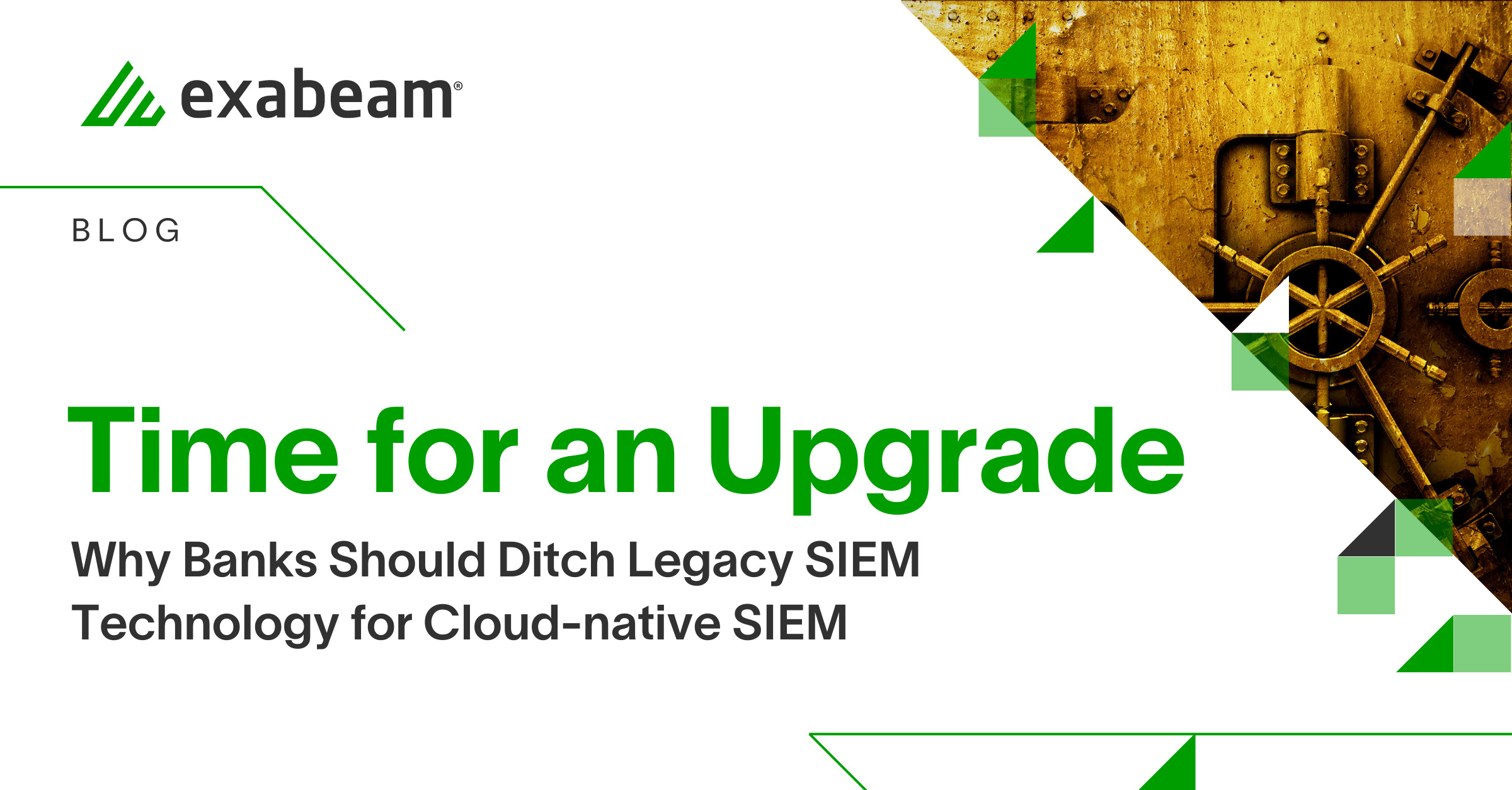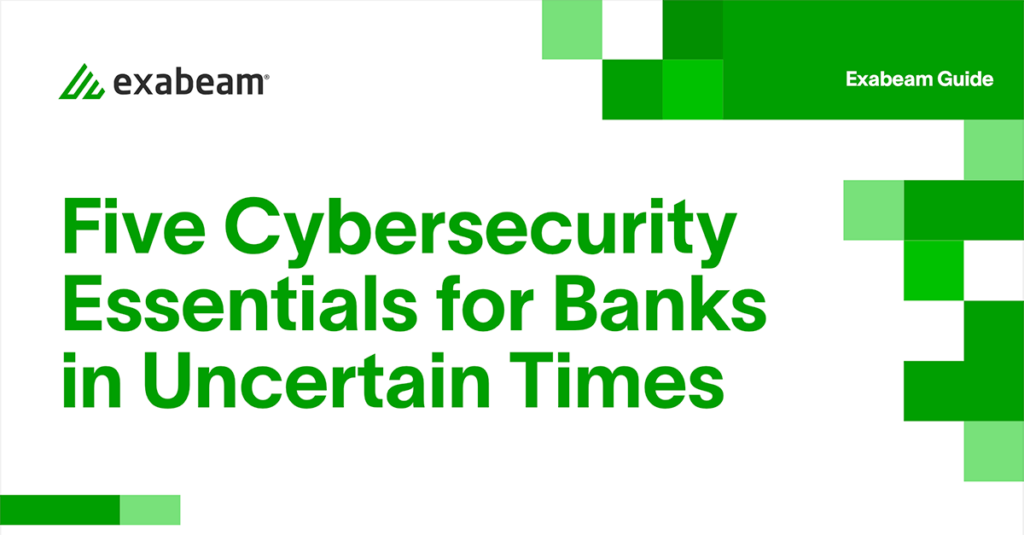Time for an Upgrade — Why Banks Should Ditch Legacy SIEM Technology for Cloud-native SIEM

In our previous post, we addressed the importance of fostering a security-aware culture within banks. With the prevalence of user errors leading to compromised credentials and the digitization of money, this is more critical than ever. To conclude our series on security strategies for banking, we’ll discuss a fundamental component of bank cybersecurity infrastructure: security information and event management (SIEM). Many banks still rely on outdated SIEM technology, which can inundate security teams with data and alerts, leading to delays in incident resolution. In this post, we’ll explore the limitations of legacy SIEM and discuss the benefits of modern, cloud-native SIEM for improved threat detection, investigation, and response (TDIR).
In this article:
- Limitations of legacy SIEM technology
- The advantages of cloud-native SIEM
- Implementing cloud-native SIEM
- Maintaining and optimizing cloud-native SIEM
- All good things must come to an end
Limitations of legacy SIEM technology
Not all SIEM technology is created equal, and traditional SIEM systems struggle with processing massive amounts of data, leading to alert fatigue and potentially causing analysts to overlook critical incidents. These systems rely on predefined correlation rules that may fail to detect new or emerging threats, resulting in undetected threats and noisy alerts for benign activities.
Legacy SIEM solutions can also be challenging to deploy and maintain, often requiring extensive customization and manual configuration. With most security teams under-resourced, this is especially problematic to maintain. This can result in high implementation costs and lengthy deployment times, making it difficult for banks to keep up with evolving threats.
The advantages of cloud-native SIEM
Cloud-native SIEM solutions like the Exabeam Security Operations Platform use advanced analytics and machine learning for enhanced TDIR capabilities, offering greater scalability and flexibility. Exabeam provides a comprehensive view of an attack, enabling banks to better protect their systems. With Smart Timelines™, banks can track every accessed and impacted asset, which improves their ability to manage lateral movement across their network and effectively respond to threats.
Implementing cloud-native SIEM
Before implementing a cloud-native SIEM solution, banks must carefully evaluate their unique needs and requirements. This evaluation should take into account aspects like the organization’s size and complexity, the nature of threats encountered, and the current security tools and infrastructure in place. When examining cloud-native SIEM options, factors such as seamless deployment and integration, scalability, and advanced threat detection should be a requirement. Additionally, banks should assess the degree of support and expertise offered by the vendor to ensure a successful implementation and ongoing maintenance of the solution.
Making the switch to cloud-native SIEM requires careful planning and execution. Key steps in this process include:
- Data migration — Transferring log data and other relevant information from the legacy SIEM system to the cloud-native SIEM system. This process may involve converting data formats and ensuring data is properly indexed and searchable within the new system.
- Integration — Incorporating the cloud-native SIEM solution with existing security tools and data sources, including firewalls, intrusion detection systems, and threat intelligence feeds. This step might require configuring APIs, customizing data parsers, and establishing data ingestion pipelines.
- Rule and policy configuration — Setting up the cloud-native SIEM solution to detect and address relevant threats and risks in accordance with the bank’s specific needs and requirements. This task could involve generating custom correlation rules, creating risk scoring models, and defining incident response workflows.
- Training and adoption — Ensuring that security teams are adequately trained and comfortable using the cloud-native SIEM solution. This effort might include organizing training sessions, providing documentation and resources, and cultivating a culture of continuous learning and improvement.
Maintaining and optimizing cloud-native SIEM
To ensure the ongoing effectiveness of cloud-native SIEM, banks should conduct routine assessments and updates. This involves keeping threat intelligence feeds current, reviewing correlation rules and risk-scoring models, and staying up to date with the most recent developments in cyberthreats and attack methodologies.
Cloud-native SIEM solutions present many opportunities for constant improvement and innovation. Banks should proactively explore ways to optimize their SIEM systems, such as employing machine learning algorithms, exploring new data sources, or integrating with emerging security technologies.
Lastly, it’s essential for banks to establish metrics and KPIs to gauge the effectiveness of their cloud-native SIEM solution and demonstrate its value to stakeholders. This could include tracking metrics like the number of incidents detected and resolved, the time to respond to them, and the overall reduction in risk exposure.
All good things must come to an end
We hope you’ve enjoyed our series on cybersecurity for banking and have gained some valuable insights. In case you missed any of the previous posts, you can catch up here:
- Bolstering Bank Cybersecurity — Combating External and Insider Threats with MFA
- Safeguarding Banks With Security Updates, Patching, and Pen Testing
- Unveiling Anomalies — Strengthening Bank Security With Behavioral Analytics
- Cultivating a Risk-aware Culture — Employee Training and Awareness in Bank Cybersecurity
There’s no stopping the evolution of cyberthreats. It’s incumbent upon banks to adapt their security infrastructure to stay ahead of these emerging threats. By moving away from outdated legacy SIEM technology to cloud-native SIEM, banks can substantially improve their TDIR capabilities, alleviate pressure on security teams, and better protect their most valuable assets. With the right planning and implementation, cloud-native SIEM can serve as a formidable tool in the fight against cyberthreats, helping banks preserve their customers’ trust and security.
Want to learn more about defending banks against cyberthreats?
Read our guide, Five Cybersecurity Essentials for Banks in Uncertain Times.
Banks are facing unprecedented challenges in securing their digital ecosystems while maintaining cost efficiency. With cybercriminals increasingly targeting the financial industry, your bank’s reputation as a trustworthy partner is at stake.
Don’t leave your bank exposed to the growing number of cyberthreats. Download our guide and learn how to bolster your defenses, protect sensitive customer data, and minimize the financial impact of cyberattacks.
You’ll discover:
- The importance of implementing multifactor authentication to secure customer data and prevent unauthorized access
- How to proactively identify potential threats using behavioral analytics
- Why abandoning legacy SIEM technology is essential for a modern and effective cybersecurity approach
With data breach costs averaging nearly $6 million, you can’t afford to leave your bank’s security to chance. Get our essential strategies for protecting your bank against cyberthreats.

Similar Posts
Recent Posts
Stay Informed
Subscribe today and we'll send our latest blog posts right to your inbox, so you can stay ahead of the cybercriminals and defend your organization.
See a world-class SIEM solution in action
Most reported breaches involved lost or stolen credentials. How can you keep pace?
Exabeam delivers SOC teams industry-leading analytics, patented anomaly detection, and Smart Timelines to help teams pinpoint the actions that lead to exploits.
Whether you need a SIEM replacement, a legacy SIEM modernization with XDR, Exabeam offers advanced, modular, and cloud-delivered TDIR.
Get a demo today!











